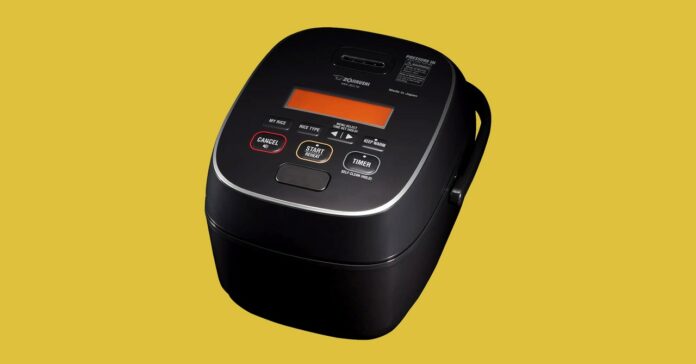For as big as the cooking industry is, most kitchen-product launches are modest affairs. There might be some trade show hoopla or a video, and lord knows my inbox is full of press releases, but a recent rice cooker event, of all things, stood out for its flashiness. Japanese manufacturer Zojirushi proposed an expense-paid trip to Japan House in Los Angeles for sushi, cocktails, and the unveiling of its “most advanced and expensive rice cooker” to date in the United States.
I passed on the invite, but as the very satisfied owner of a 10-year-old Zojirushi with a modern equivalent that costs under $200, I was curious to know how much better a model costing $550 more could possibly be.
My old machine, the Zojirushi NS-LAC05 (later replaced by the NS-LGC05), is about as middle-of-the-road as the Zojirushi lineup gets in the United States, yet it embodies everything I love about electric rice cookers. Measure rice and water in the pot, close the lid, hit the Cooking button, and walk away until it sings a song to let you know it’s done. Excellent rice awaits and is kept warm, moist, and in decent shape for as long as a couple of days. It’s a bit of a uni-tasker, and there are other, more hands-on ways to make better rice. But it’s so competent and hands-off—and I am perhaps so lazy—that I just never see the point of other methods.
Zojirushi’s new mouthful, the Pressure Induction Heating Rice Cooker & Warmer NW-JEC10/18, comes in 5.5- and 10-cup sizes, and it sits at the top of the company’s lineup. It cooks with pressure, which the marketing copy says “promotes gelatinization” while producing “sticky and plump rice.” To me, pressure-cooked rice can be excellent, creating a more distinct, less mushy grain of rice. The machine also uses induction heat, which is fast and is very good at holding the temperature steady. Versions of these features are available in Zojirushi’s excellent NP-NWC10, but this new model also sports a new “My Rice” customization feature for white rice.
When you make white rice on the new machine, you can choose between five presets of rice firmness—a nice touch—and you can try other settings like Quick, Mixed, Sushi, or Porridge. You can also use the My Rice feature where you essentially rate your white rice after it’s cooked. That feedback gradually adjusts the firmness and stickiness of subsequent batches, working toward your version of perfect when you cook starting from the My Rice submenu.
At home, I used the new machine to make short-grain white rice, and it was clearly better than what my old machine could make. From there, My Rice allowed me to get as fussy as I wanted with it. Considering that every brand of rice can cook up a little differently, this allows you to really dial in the best variables for your favorite brand.
Options galore, right? Well, yes and no. Notice how I repeated “white rice” a lot when describing possible adjustments in the last few paragraphs? If you set the machine to cook brown or jasmine rice, those settings have none of those firmer, softer, or quicker options like the white rice. No My Rice at all.
This was made worse when I used the brown rice that Zojirushi uses for testing, Nishiki Genmai brown rice. I loaded up the machine, scrolled to the brown rice setting, and made a batch, later giving my wife Elisabeth a spoonful of the just-finished product.
She reacted with a question: “Did you cook this on the Mush setting?”
Oof!
You may sense I started looking for the exits at this point.
Photograph: Zojirushi


